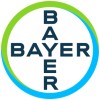
Incremental Hemodialysis for Veterans in the First Year of Dialysis (IncHVets)
Chronic Kidney Disease (CKD) Stage 5Kidney Dysfunction Requiring Dialysis (KDRD)1 moreIn this pragmatic clinical trial, which will dovetail with Veterans' routine outpatient dialysis clinic visits in six VA medical centers, the investigators will study 252 Veterans with kidney disease who need to start dialysis treatment. If a Veteran is eligible for the study by making enough residual urine, he/she will have a 50% chance to be offered the usual three-times-per-week dialysis vs. twice-per-week dialysis that is gradually increased to three-times per- week over one year. The investigators will compare health-related quality of life, how long residual kidney function lasts, and other measures including safety in these two groups. By conducting this study, the investigators hope to understand 1) whether starting dialysis with less frequency is safe, effective, and can help Veterans and their care-partners to better cope with dialysis, and 2) if incremental dialysis can result in major cost benefits to the VA health care system, thus allowing more patients to stay in VA dialysis clinics vs. being transferred to outside clinics.

SPYRAL AFFIRM Global Study of RDN With the Symplicity Spyral RDN System in Subjects With Uncontrolled...
HypertensionVascular Diseases3 moreThe purpose of this single-arm interventional study is to evaluate the long-term safety, efficacy, and durability of the Symplicity Spyral system in subjects treated with renal denervation. Additionally, long-term follow-up data will also be collected from eligible subjects previously treated in the SPYRAL PIVOTAL-SPYRAL HTN-OFF MED and SPYRAL HTN-ON MED studies.

Effects of Dapagliflozin on EChOcardiographic Measures of CarDiac StructurE and Function in Patients...
Chronic Kidney DiseasesThe purpose of this study is to investigate the effects of dapagliflozin on echocardiographic measures of cardiac structure and function in patients with chronic kidney disease.

A Study to Learn How Well the Treatment Combination of Finerenone and Empagliflozin Works and How...
Type 2 Diabetes MellitusChronic Kidney DiseaseFinerenone works by blocking a group of proteins, called mineralocorticoid receptor. An increased stimulation of mineralocorticoid receptor is known to trigger injury and inflammation in the kidney and is therefore thought to play a role in CKD. Empagliflozin lowers blood sugar levels by increasing the excretion of glucose from the blood into the urine. In this study, the researchers want to learn how well the combination of finerenone and empagliflozin helps to slow down the worsening of the participants' kidney function compared to either treatment alone. For this, the level of protein in the urine will be measured. The investigators also want to know how safe the combination is compared to either treatment alone. Depending on the treatment group, the participants will either take the combination of finerenone and empagliflozin, or finerenone together with a placebo, or empagliflozin together with a placebo, once a day as tablets by mouth. A placebo looks like a treatment but does not have any medicine in it. Importantly, the participants will also continue to take their other current medicine for CKD and T2D. The participants will be in the study for up to 7.5 months and will take the study treatments for 6 months. During the study, participants will visit the study site 7 times. The study team will: collect blood and urine samples check the participants' vital signs do a physical examination including height and weight check the participants' heart health by using an electrocardiogram (ECG) monitor the participants' blood pressure ask the participants questions about how they are feeling and what adverse events they may be having An adverse event is any problem that happens during the trial. Doctors keep track of all events that happen in trials, even if they do not think the events might be related to the study treatments.

Effects of Nitrate-rich Beetroot Juice in Pregnant Women With High Blood Pressure
PreeclampsiaHypertension5 moreBACKGROUND: Preeclampsia (PE) is a serious syndrome that affects 3-7% of all pregnant women. PE is characterized by hypertension and kidney problems after the 20th week of pregnancy and is associated with an increased risk of serious cardiovascular complications including death in both mother and fetus. The underlying disease mechanisms are not clear, but that there are changes in the vessels and their function is generally accepted. Today, there is a lack of medical treatment in the form of medicines. HYPOTHESIS: So-called oxidative stress and deficiency of the vasodilator nitric oxide (NO) play an important role in disease onset and complications in PE. WORK PLAN: This interdisciplinary project combines clinical and experimental studies to investigate the significance of oxidative stress and NO deficiency in PE. We have shown in previous studies that nitrate, which is found in high levels in lettuce and beets, can be converted to NO in the body. In a feasibility study, blood samples were taken from women with PE and healthy pregnant women. Analysis of these samples has shown that women with PE and their newborns have lower levels of nitrate and markers of NO in the blood. In a clinical study, the physiological effects (cardiovascular function, renal function, metabolic function) of an increased daily nitrate intake (in the form of a specially developed beetroot juice) are examined in patients with PE. Blood and urine samples are collected before and after beetroot intervention and during childbirth when umbilical cord and placenta samples are also collected. The samples are analyzed with biochemical analyzes with regard to e.g. oxidative stress and NO. IMPORTANCE: The project is expected to contribute new and important knowledge regarding the disease mechanisms, which may enable new treatment strategies in PE.

A Study to Learn More About How Well the Study Treatment Finerenone Works, How Safe it is, How it...
Chronic Kidney DiseaseProteinuriaResearchers are looking for a better way to treat children who have chronic kidney disease (CKD), which is long-term kidney disease, and proteinuria, a condition in which a person´s kidneys leak protein into the urine. The kidneys filter waste and fluid from the blood to form urine. In children with CKD, the kidney´s filters do not work as well as they should. This can lead to accumulation of waste and fluid in the body and proteinuria. CKD can lead to other medical problems, such as high blood pressure, also known as hypertension. Vice versa, hypertension and proteinuria can also contribute to worsening of CKD. Therefore, the treatment of CKD aims to control blood pressure and proteinuria. There are treatments available for doctors to prescribe to children with CKD and hypertension and/or proteinuria. These include "angiotensin-converting enzyme inhibitors" (ACEI) and "angiotensin receptor blockers" (ARB). Both ACEI and ARB can improve kidney function by helping the renin-angiotensin-aldosterone system (RAAS) to work normally. The RAAS is a system that works with the kidneys to control blood pressure and the balance of fluid and electrolytes in the blood. In people with CKD, the RAAS is often too active, which can stop the kidneys from working properly and cause hypertension and proteinuria. However, ACEI or ARB treatment alone does not work for all patients with CKD as they only target the angiotensin part of the renin-angiotensin-aldosterone system. The study treatment, finerenone, is expected to help control RAAS overactivation together with an ACEI or ARB. So, the researchers in this study want to learn more about whether finerenone given in addition to either an ACEI or ARB can help their kidney function. The main purpose of this study is to learn more about whether finerenone added to either ACEI or ARB can help reduce the amount of protein in the participants' urine more than a placebo. A placebo looks like a treatment but does not have any medicine in it. Participants will also continue to receive their other medications. To see how the treatment work, the doctors will take samples of the participants' urine to measure their protein levels before and during taking treatment and after their last treatment. In addition, blood samples will be taken to monitor kidney function, electrolytes and the amount of finerenone in the blood as well as for other tests. This study will include children with CKD and proteinuria aged from 6 months up to less than 18 years. The participants will take: either finerenone or the placebo, in addition to either ACEI or ARB, whichever they take as part of their normal treatment Two visits are required up to 104 days, to check whether a child can take part in the treatment phase of the study. If participants qualify for the treatment phase, they will then undergo treatment for about 180 days. During this time, they will visit the study site at least 7 times. During these visits, the participants will: have their blood pressure, heart rate, temperature, height and weight measured have blood and urine samples taken have physical examinations have their heart examined by an electrocardiogram and echocardiography (a sonogram of the heart) answer questions about their medication and whether they have any adverse events , or have their parents or guardians answer answer questions about how they are feeling, or have their parents or guardians answer answer question about how they like the study medication, or have their parents or guardians answer The doctors will keep track of any adverse events. An adverse event is any medical problem that a participant has during a study. Doctors keep track of all adverse events that happen in studies, even if they do not think the adverse events might be related to the study treatments. The doctors will check the participants' health about 30 days after the participants take their last treatment.

Testosterone Treatment in Men With Chronic Kidney Disease
HypogonadismMale2 moreThis study in being conducted in men who have low testosterone and chronic kidney disease. The investigators will evaluate the effects of an oral testosterone preparation, JATENZO, on testosterone levels and hemoglobin (red blood cells).

CR845-310302: A Study to Evaluate the Safety and Efficacy of Difelikefalin in Advanced Chronic Kidney...
Chronic Kidney DiseasesPruritusThis is a multicenter, double-blind, randomized, placebo-controlled study to evaluate the safety and efficacy of oral difelikefalin administered as a 1 mg tablet once daily compared to placebo in reducing the intensity of itch in advanced chronic kidney disease (CKD) patients with moderate-to-severe pruritus. This study is comprised of an Efficacy Assessment Phase and a Long-term Extension Phase. The Efficacy Assessment Phase includes a double-blind 12-week Treatment Period (Treatment Period 1), and the Long-term Extension Phase includes a double-blind Treatment Period (Treatment Period 2) of up to 52 weeks.

Efficacy of Plant-protein Diets in Patients With Chronic Kidney Disease
Chronic Kidney Disease Stage 5The purpose of this study is to evaluate the efficacy of plant-protein diets for 12 weeks in patients with advanced chronic kidney disease.

SGLT2 Inhibition in Hemodialysis
Kidney FailureHemodialysis4 moreThe study is designed as a prospective randomized, controlled, double-blinded phase II trial to examine the effect of the SGLT2 inhibitor dapagliflozin, in comparison with placebo on cardiovascular outcome parameters in kidney failure patients undergoing replacement therapy with hemodialysis. The primary endpoint is the change (∆) in left ventricular mass indexed to body surface area (LVMi) from baseline to 6 months measured by cardiac magnetic resonance imaging. Null and alternative hypotheses: H0: There is no difference in the ∆ Left Ventricular Mass indexed to BSA after six months of treatment, comparing patients having received the SGLT2-Inhibitor Dapagliflozin versus placebo. H1: There is a difference in the ∆ Left Ventricular Mass indexed to BSA comparing patients having received the SGLT2-Inhibitor Dapagliflozin versus placebo.
